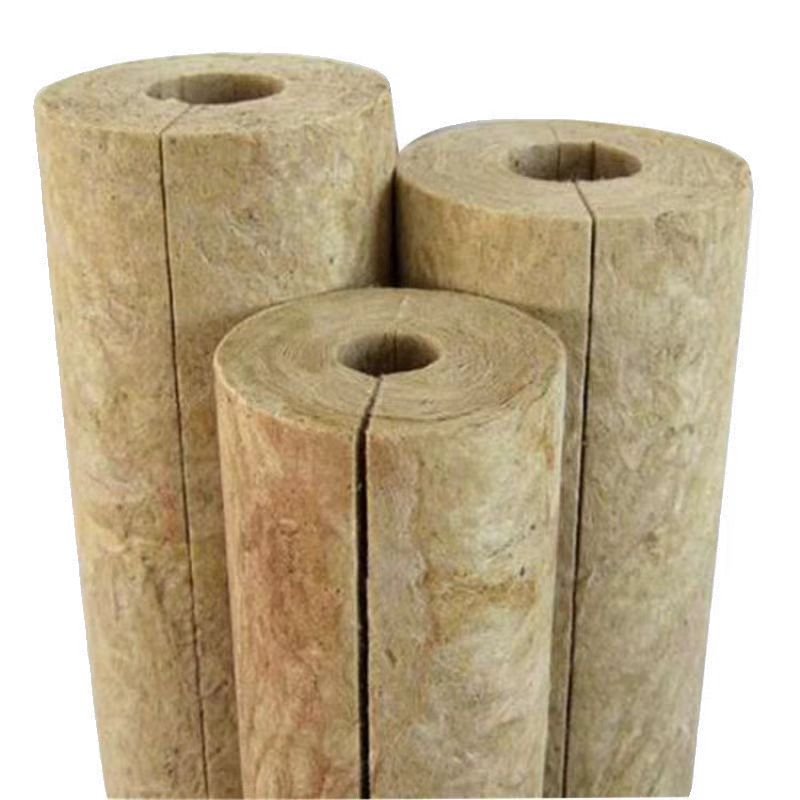Rock wool pipe: An efficient insulation tool for industrial and construction fields
2025-07-04
Rock wool insulation pipe
Rock wool pipes, crafted from natural basalt through high-temperature melting and centrifugal fiber spinning, stand as premium inorganic fiber insulation solutions, typically deployed as pipe shells in diverse pipeline systems. Renowned for their exceptional thermal efficiency, unyielding fire resistance, superior sound absorption, and robust chemical durability, these pipes are revolutionizing energy conservation and safety across industries and buildings, offering a sustainable alternative that minimizes heat loss, curbs emissions, and enhances structural longevity in an era demanding eco-conscious innovation.

In an age where energy efficiency is not just a goal but a global imperative, the choice of insulation materials can make or break the sustainability of massive infrastructures and cozy homes alike. Rock wool pipes, born from the earth's volcanic bounty, embody this pursuit of excellence. Derived from natural basalt rock melted at scorching temperatures exceeding 1,400°C and spun into fine fibers via high-speed centrifugal force, these pipes represent a harmonious blend of nature's resilience and human engineering. Often enhanced with specialized binders and anti-dust oils during curing, they form versatile pipe shells that adapt seamlessly to the demands of modern pipelines. Some advanced variants even incorporate glass wool or aluminosilicate fibers, creating composite shells that amplify their protective prowess. As we navigate the challenges of climate change and resource scarcity, rock wool pipes emerge as silent guardians, ensuring warmth where it's needed and safety where it's critical.
What sets rock wool pipes apart is their symphony of superior characteristics, each finely tuned to address real-world pain points. At the heart lies their unparalleled thermal insulation, with a low conductivity typically ranging from 0.035 to 0.045 W/(m·K)—far surpassing many organic alternatives. This efficiency stems from the fibers' intricate structure, which traps air in microscopic pockets, impeding heat flow and slashing energy loss by up to 50% in heating systems. Imagine a bustling factory where steam pipes once radiated wasteful heat; now, encased in rock wool, they maintain consistent temperatures, boosting operational efficiency and reducing fuel bills. In architectural settings, this translates to cozier interiors during harsh winters, without the energy guzzling of outdated insulators.
Fire safety, a non-negotiable in today's high-stakes environments, is where rock wool pipes truly shine. As inherently inorganic and non-combustible materials, they achieve the highest A1 fire rating, enduring temperatures up to 1,000°C without melting, dripping, or releasing toxic fumes. This flame-retardant fortitude can slow fire spread by 80%, providing precious minutes for evacuation in chemical plants or high-rise buildings. Consider a petrochemical facility: rock wool pipes not only insulate but act as a barrier against ignition, safeguarding workers and assets alike. Complementing this is their acoustic excellence—the porous fiber matrix absorbs sound waves, achieving noise reduction coefficients (NRC) of 0.8–1.0, ideal for creating serene spaces in hospitals, schools, or urban apartments amid the din of city life.
Durability forms the backbone of rock wool's appeal, with exceptional chemical stability resisting acids, alkalis, and corrosion. This robustness extends service life to 25–30 years or more, far outlasting foam-based options that degrade in 5–10 years. Maintenance becomes a rarity, cutting costs by 40% over the lifecycle. In aggressive environments like metallurgy furnaces or coastal pipelines, where salt and humidity erode lesser materials, rock wool stands unyielding, preserving integrity and preventing costly downtime.
The versatility of rock wool pipes knows few bounds, spanning industrial behemoths to everyday constructions. In the petroleum, chemical, metallurgy, and power sectors, they envelop high-temperature steam lines, oil conduits, and gas transporters, curbing heat dissipation and averting corrosion. A refinery in Texas, for instance, reported 30% energy savings after retrofitting with rock wool shells, while also complying with stringent safety regulations. In construction, they insulate heating, air conditioning, and plumbing systems, enhancing building energy ratings and occupant comfort. High-rise developments in Dubai leverage their fireproof nature for wall partitions and ceilings, elevating fire safety without adding weight. Even in emerging green projects, rock wool's recyclability—up to 80% from natural minerals—aligns with LEED certifications, contributing to lower embodied carbon footprints.
As technology marches forward and the call for sustainable, resilient infrastructure grows louder, rock wool pipes are poised to claim an even greater share of the market. Innovations like enhanced composites and integrated sensors promise smarter, more adaptive insulation. In a world striving for net-zero emissions, these pipes aren't merely materials—they're catalysts for change, weaving energy conservation, safety, and environmental stewardship into the fabric of our built world.
LATEST NEWS
Why Does Metal Feel Cold and Wood Feel Warm at the Same Room Temperature? Unveiling the Magic of Thermal Conductivity!
2025-11-20
Innovative Aerogel Pipe Insulation Boosting Efficiency in Energy Industries
2025-11-17
Ordering and Specification Guidance for Aerogel Sheet and Pipe Insulation Products
2025-11-17
Luminescent Concrete Transforms Global Architecture with Light and Design Freedom
2025-11-13
Aerogel: The Ultralight Revolution – Transforming Industries with Unmatched Versatility
2025-11-11
